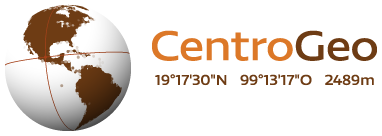Detailed Mapping of Land Use – Land Cover Using an Object- Oriented Classification Method on High Resolution Satellite Data: A Case Study in the Usumacinta Watershed, Mexico
Land use is the interaction between humans and the biophysical environment with cumulative impacts on the structure, function, and dynamics of ecosystems at the local, regional, and global levels of ecological organiza tion. Human activities that produce changes in land cover, such as agriculture, is a major cause of the ecological footprint. The National Institute of statistic and Geography provides spatial information about land cover and use, at the national level, scale of 1: 250,000. This information is not suitable for local planning purposes. The recent availability of high-resolution satellite remote-sensing images coupling with advances digital image pro cessing techniques offers an improved opportunity to map a more detailed scale the land use and land cover, which will be an important tool to monitor the environment at local scales. In these sense it is the objective of this study, to carry out a detailed mapping of land use-land cover at the Usumacinta watershed, using an object based classification of very resolution satellite images.
To mapping agriculture areas an Object-oriented Classification Method in combination with a knowledge-based image classification, on High Resolution Spot images (spatial resolution 1.5 meters) was used. The procedure to images classification includes the following steps: Image segmentation, variables calculation, model classification design, model classification implementation, classes merge and vectorization. Then a field work was carried out to check the land use land cover, using GPS to locate points, which allow to adjust the polygons of land use – land cover classes through of digital interpretation. Some of the results obtained include: a) detailed mapping of agricultural areas represented in the existing cartography as secondary vegetation for the most part and to a lesser extent as primary vegetation, b) pasture areas are discriminated against agricultural areas, c) Concern to the secondary vegetation it was possible to separate the arboreal, shrub and herbaceous vegetation. Concern to cartographic units a proposal is presented to introduce new cartographic units such as association (where two or more types of use are predominant) and consociation (where a single type of use dominant). This cartographic approach allows to make a final cartographic output more practical and more stable in the time, particularly useful in hillside areas where migratory agricultural activities are very common and cultural, leaving the land to rest for periods that can range from 6 months to 5 years.





